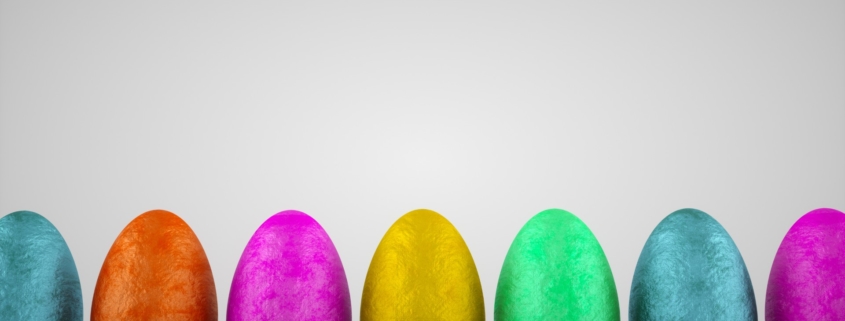Cracking Facts About Aluminium for Easter
At the end of this month, we’ll be tucking into Easter eggs, but what’s that got to do with aluminium? As specialists in aluminium extrusions, we have what some might describe as an obsession with facts about this versatile metal. So, let us tell you more!
Aluminium Wrap for Easter Eggs
Did you know that it takes approximately 160 tonnes of aluminium foil to wrap all the Easter Eggs sold in the UK?
For many years, Easter Eggs were the ultimate example of excessive packaging. However, with growing awareness of both environmental impact and value for money, this has changed. As a result, most eggs are now sold wrapped in aluminium foil and protected in a small card box. Fortunately, both of these packaging materials are 100% recyclable.
Simply scrunch the aluminium foil into a ball and drop it into the recycling bin with the card. The ball makes it easier for the aluminium to be recycled. If you tuck into more than one egg, scrunch all the aluminium into one ball. As an infinitely recyclable metal, your chocolate wrappers could be made into retail fittings, car parts or picture frames.
Why is Food Wrapped in Aluminium?
Ever wondered why foil is used to wrap food? There are many reasons, including the following facts:
- Aluminium does not react when it comes into contact with food
- It is a non-toxic metal that leaves no taste
- Thin sheets of foil are low-cost, lightweight and malleable, therefore it can form into any shape
- Aluminium isn’t easily punctured and provides an effective barrier to oxygen and moisture
- As a temperature resistant metal, aluminium helps retain the temperature of the food – hot or cold
These are just a few of the properties that make this a desirable metal. So, let’s stick to our Easter theme and look at some alternative applications for aluminium.
Alberta’s Aluminium Egg
Did you know that the World’s largest Easter egg is made from 3500 large aluminium pieces?
Vegreville Pysanka is an iconic sculpture and landmark located in Alberta, Canada. Designed in the style of traditional Ukrainian egg decorating art, it stands 31 ft tall, over 25 ft long and 18 ft wide. It was built to mark the Royal Canadian Mounted Police centennial and is a celebration of the cultural diversity of the town.
It is said to have taken 12,000 hours to assemble the parts that form this enormous egg. Exposed to all the elements, this complex piece of engineering is a testament to the strength and durability of aluminium parts.
For other examples of impressive metal eggs, you have to visit the Fabergé Museum in St Petersburg. As the wife of a Russian Tsar, you may have received one of these one-off precious metal eggs, embellished with jewels and the finest enamel details. As rare collectables, each is worth millions, so we will have to stick to gifts of the aluminium-wrapped, chocolate variety!
On a Roll with Aluminium
As we are on a roll with aluminium and eggs, let’s consider some other ways in which this metal contributes to the journey from chocolatier to checkout.
Let us share three examples:
- Aluminium extrusions are used in factory components, which shape and package the chocolate.
- Vehicle parts are made from aluminium extrusions and the delivery of eggs is dependent on this road transport.
- Shop fittings are often made from aluminium extrusions. This includes the shelf trim and ticket display, where you look to check the prices.
As with the foil wrappers, all of these aluminium parts are fully recyclable. As such, they have probably had a previous life and will likely be used for a different application in the future.
Specialist in Aluminium Extrusions
Our team loves an Easter egg or two, but our expertise lies in the design, fabrication, assembly and finish of extruded aluminium parts. From furniture to fittings, we work with manufacturers across multiple industries to deliver practical and sustainable solutions.
Get in touch on 01296 431292 or sales@salesmade.co.uk to discuss aluminium extrusions for your prototypes, parts and projects.

